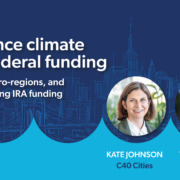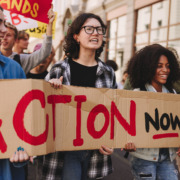Guidance on Climate Modelling from the White House
Inflation Reduction Act funding has spurred climate action across all levels of US government. The White House has issued a memo detailing how climate-economic modeling can improve in order to support more effective climate action decision-making.
The memo’s six recommended improvements are spot on. Based on our experience conducting modeling for over 100 climate action plans across the Americas, we’ve identified the same areas of improvement and integrated them into SSG’s modeling tools. Here’s a breakdown of the memo’s recommendations and how we’ve considered them.
- Include non-price policies. Our energy, emissions, land use, adaptation, and financial modeling account for many different policy types—financial, physical, geographical, etc.—implemented by different levels of government.
- Account for transitional dynamics and friction. SSG’s models address the impact of market shifts by determining the potential employment generated or lost by a variety of climate actions. This supports decision-makers in understanding and preparing for employment gains and losses across a variety of job sectors. For example, the City of Moncton plans to bolster its trucking industry while reducing emissions by powering trucks with green hydrogen produced with solar energy—a recommendation shaped by our economic modeling.
- Account for interaction between physical and transition risks. Understanding the socio-economic impact of climate actions is critical to effective policy development. SSG’s models assess the impact of different climate action policies on jobs and other economic factors on different implementation timelines, allowing decision-makers to choose pathways that minimize market instability while maximizing positive climate action outcomes. In fact, the City of Toronto chose to aim for net zero by 2040, rather than 2050, after our modeling showed taking climate action on a more ambitious timeline would cost less.
- Account for equity effects. Climate impacts and climate actions affect different communities to different extents. Our models perform equity analysis by identifying how climate change and potential policies may impact people and households with different incomes, in different neighborhoods, and in different demographies. This information helps inform where action is most needed and how actions can be implemented to ensure low-income and disadvantaged communities benefit. For example, the model can help identify where to bolster transit connections to improve equitable transportation access, while reducing emissions.
- Account for extreme event risks. SSG’s climate change adaptation model for communities can explore low, moderate, high, and extreme climate change impacts. It includes severe flood, heat, drought, landslide, wildfire, and other events to determine geospatial and socio-economic risks, as well as what adaptive actions can be taken. That translates into significant policy decisions—like the Town of Whitby’s decision to shift its planned developments to other locations in order to reduce $17 billion of potential flood damage.
- Include different time scales and spatial granularity. It is important to know the impact of what will happen and where in the near-, mid-, long-term to be able to prioritize actions. SSG’s modeling is year-over-year, accommodating any time scale over the next 50 years. Data is specific to properties, buildings, and transportation behaviors, allowing precision about where to implement policies and measures.
The memo also notes several areas where US departments can better coordinate and make efforts to generate improved data and models. This is good news for all jurisdictions as more, better data and tools will be available for communities and decision-makers to base their climate policy and measures on.
However, there is no need to wait for the completion of these efforts to take action. There is already sufficient data and modeling tools to determine decarbonization pathways toward healthy, equitable communities for all.









